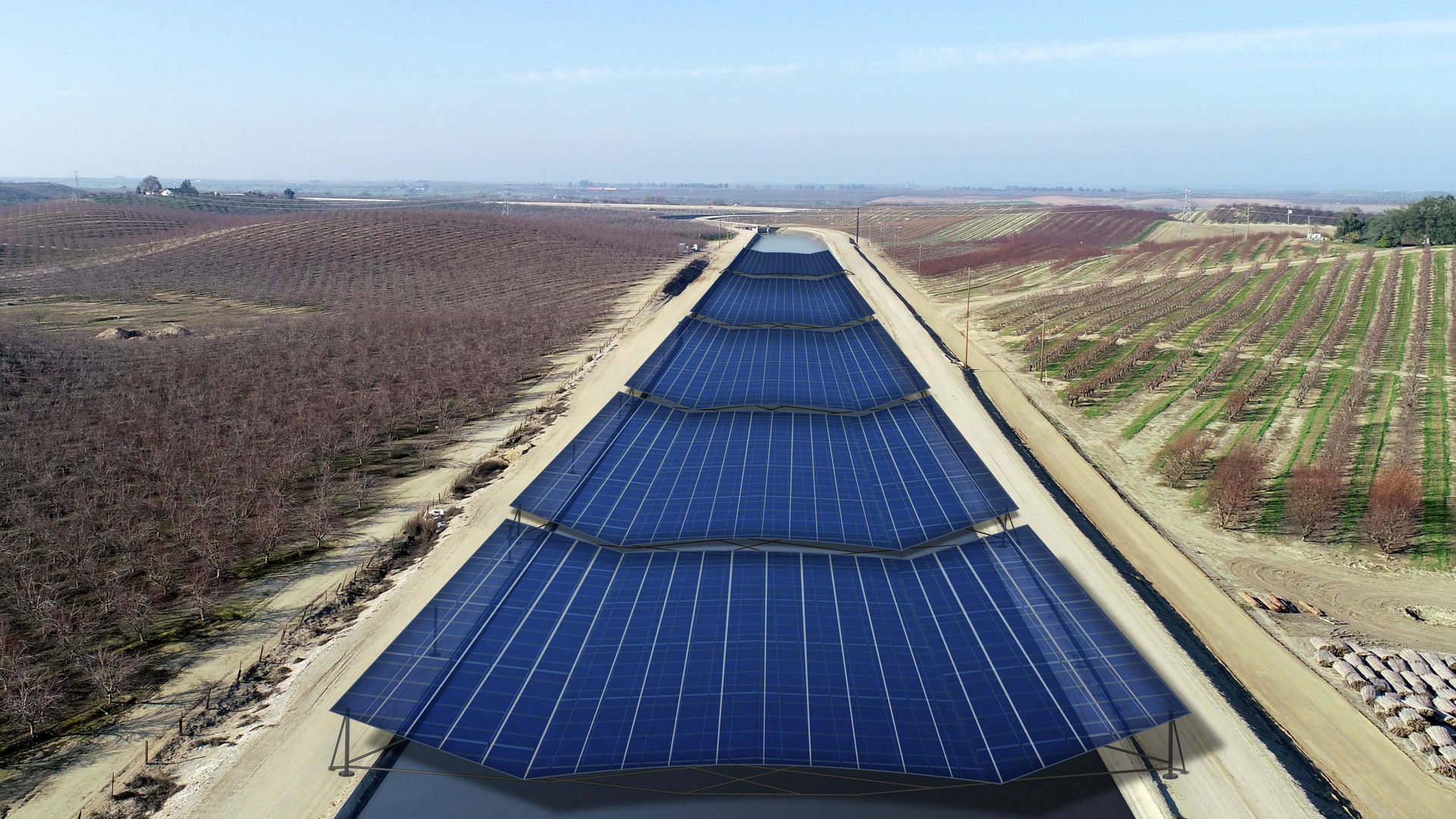| An innovative plan to conserve water by covering aqueducts with solar panels is about to undergo testing in drought-stricken California, Alex Fitzpatrick reports. Why it matters: Water is becoming more precious by the day in the Golden State and the Western U.S. more broadly, in part due to climate change. - Los Angeles County, for instance, just issued a 15-day outdoor watering ban amid problems with a pipeline carrying H2O from the Colorado River.
- As water sources like the Colorado and Lake Mead continue drying up, conservation will become even more urgent throughout the region.
Driving the news: About 8,500 feet of solar panels will be installed above two portions of Turlock Irrigation District (TID) aqueducts in Central California in a $20 million state-funded effort dubbed Project Nexus. - The idea is that the panels will shade the water running underneath, preventing loss due to evaporation.
- The panels will also generate electricity, which could either be used by TID's systems or fed into the grid for consumer use.
Details: The state is working alongside TID, Solar AquaGrid (a Bay Area sustainable project developer) and UC Merced on Project Nexus, with construction set to begin early next year. - While it follows a similar effort in India, Project Nexus will be the first such system in the U.S.
What they're saying: "My hope is that everybody's looking at our pilot project," says TID external affairs manager Josh Weimer. "I hope that we're able to do it well and that it will spur both the water industry and also the solar industry to say, 'This is a new opportunity for us that we haven't looked at before.'" Backstory: Canals are the lifeblood of the agricultural industry in California's Central Valley. - California utilities, meanwhile, are under orders to add more renewable power generation.
- The state's big electric vehicles push will only increase the demand on its already-strained grid.
By the numbers: A 2021 UC Merced study found that covering all 4,000 miles of California's canals could save 63 billion gallons of water annually, or enough for around 2 million people's residential use. - And the electricity generated by the panels would be equal to about a sixth of California's current power needs.
Yes, but: The UC Merced study was based on hypotheticals. The point of Project Nexus is to test the idea's real-world efficacy. - Moreover, getting people to use less water — goodbye, lawns — will inevitably be part of any workable solution to the crisis, though efforts like this one may be able to help, too.
What's next: Other states and utilities are eyeing similar plans, and if the approach proves fruitful, it could be replicated elsewhere around the country and world. Share this story. | 








No comments:
Post a Comment